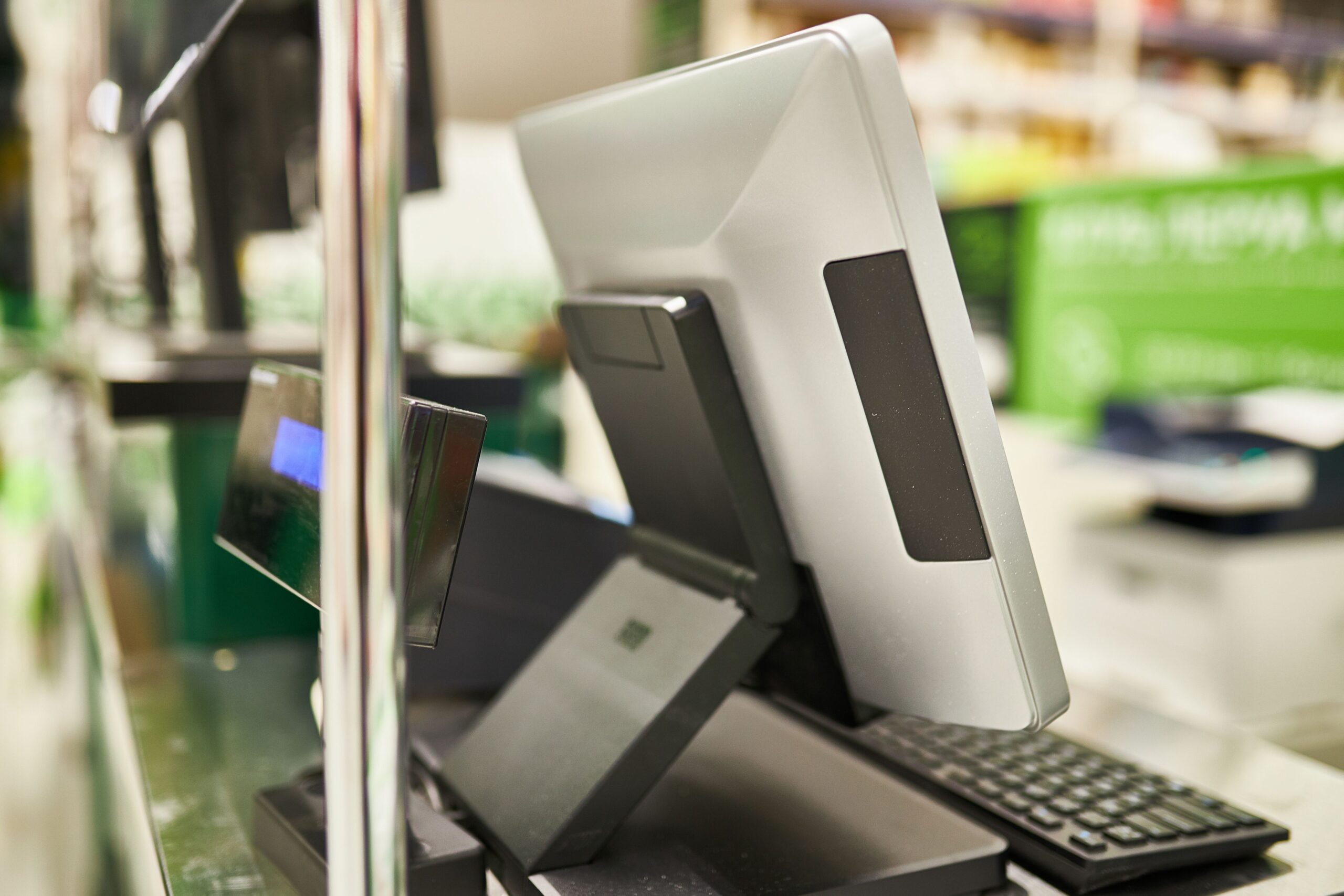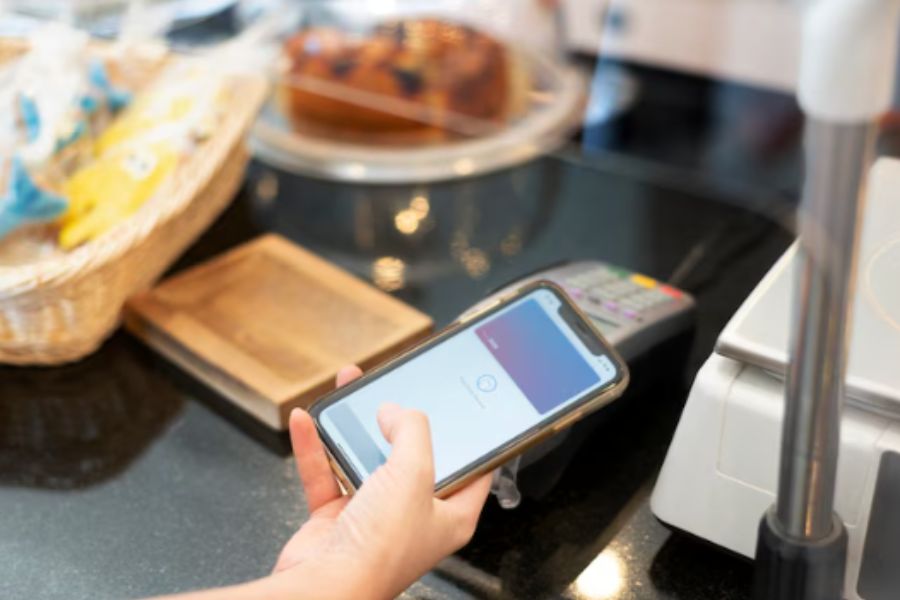Shopify, a key player in the e-commerce sphere, extends its prowess to physical stores with a comprehensive POS system. This article dives into the crucial hardware elements of Shopify hardware POS that define a seamless Shopify POS experience, exploring top picks for tablets, scanners, and payment processing tools. Join us as we unravel the essentials that elevate in-store transactions and redefine the retail landscape.
Overview Of Shopify Hardware POS
In the contemporary retail environment, the amalgamation of technology and traditional commerce is reshaping the operational dynamics of businesses. In that context, Shopify stands out as a prominent company offering both software and hardware solutions for point-of-sale (POS) systems, solidifying its position as a leader in the industry.
After its initial public offering in 2015, Shopify has experienced substantial growth, with annual revenue surpassing 5.6 billion U.S. dollars in 2022. During the initial quarter of 2023, Shopify’s Gross Merchandise Volume (GMV) approached almost 50 billion U.S. dollars.
Widely recognized for its expertise in e-commerce, Shopify is expanding its impact to brick-and-mortar establishments through the Shopify hardware POS suite, a comprehensive solution set to revolutionize in-store retail experiences.
At the core of this transformative system is the Shopify POS Terminal. Beyond its sleek aesthetics, this terminal acts as the nerve center for efficient transaction processing. Its intuitive touchscreen interface ensures a seamless checkout process, embodying Shopify’s commitment to providing retailers with technology that is not only cutting-edge but also user-friendly.
Benefits Of Using Shopify Hardware POS
Employing Shopify hardware POS brings forth numerous advantages, enhancing operational efficiency, elevating customer experiences, and driving overall business success. This makes it a versatile solution suitable for businesses of all sizes, whether they are in the nascent stages or have an established presence.
- Effortless Integration Process: The smooth and unified experience provided by Shopify POS hardware is a result of its purposeful design for seamless integration with the Shopify platform. This integration facilitates real-time synchronization of sales, inventory, and customer data, eliminating the need for manual entries and significantly reducing the likelihood of errors.
- Mobility And Adaptability: Shopify hardware POS, including mobile devices like iPads or smartphones, empowers businesses to process sales not only within their physical stores but also at off-site locations. This mobility offers flexibility for setting up pop-up shops, participating in events, facilitating curbside pickup, expanding sales opportunities, and maximizing profitability potential.
- Streamlined Checkout Process: The hardware, inclusive of card readers, cash drawers, and receipt printers, expedites the checkout process while ensuring efficiency. Barcode scanners and card readers facilitate swift item scanning and payment processing, reducing customer wait times and enhancing the overall shopping experience.
- Effective Inventory Management: Integrating Shopify POS hardware with the Shopify inventory management system enables real-time stock tracking, automates inventory updates, and triggers alerts for depleting items. Accurate inventory management prevents stockouts, improves order fulfillment, and boosts customer satisfaction.
- Customer Relationship Management: Capturing customer information at the point of sale with Shopify hardware POS allows businesses to construct customer profiles, track purchase history, and personalize future interactions. This information empowers businesses to launch targeted marketing campaigns and devise loyalty programs, enhancing customer engagement and retention through personalized recommendations.
- Comprehensive Analytics & Reporting: Shopify POS hardware provides business owners with comprehensive access to data on sales performance, product popularity, and customer behavior. This insight enables businesses to make informed decisions, identify trends, and optimize sales strategies for superior business growth.
How To Choose The Right Shopify Hardware POS
Ensuring a seamless and efficient checkout experience requires careful consideration when selecting Shopify POS hardware, given the platform’s popularity. This guide explores key factors to help make an informed decision, guiding you toward the optimal hardware setup for your business.
Understanding Store Requirements
While some POS hardware is essential for all stores, there’s no one-size-fits-all solution. Consider your store’s unique setup, selling operations, and whether you have multiple locations or employees. Ask yourself:
- How Do You Intend To Process Customer Checkouts? For a traditional setup, you’ll need a tablet, stand, card reader, cash drawer, receipt printer, and barcode printing equipment. For mobile checkout, a smartphone or tablet with a card reader may suffice.
- What Is The Size Of Your Retail Store? For a single location, a tablet, card reader, accessories, and a cash drawer may be enough. Multiple permanent locations may require additional equipment sets.
- Do You Desire To Expedite Specific Processes? Customize your setup to match evolving needs, such as using smartphones during peak times or incorporating a barcode scanner for quicker inventory handling.
Market Possibilities And Considerations
- Compatibility With Shopify POS System: Ensure the Shopify hardware POS seamlessly integrates with the Shopify POS system for real-time synchronization of inventory, sales, and customer data.
- Type Of Shopify POS Hardware Setup: Choose between mobile (e.g., iPads, smartphones) and countertop setups based on your business needs and operational requirements.
- Features And Functionalities: Evaluate if the hardware offers essential features that streamline sales operations and enhance customer experience.
- Quality And Durability: Invest in high-quality, durable hardware designed to withstand the demands of a retail environment.
- Cost And Budget: Balance budget constraints with hardware quality, considering long-term expenses and necessary peripherals.
- Customer Support & Warranty: Check for a robust warranty and responsive customer support to address troubleshooting needs and potential issues.
Thorough Research and Exploration
- Harness Online Retail Communities: Platforms like LinkedIn, Facebook groups, and Reddit communities offer valuable recommendations from experienced retailers.
- Read Online Reviews: Explore manufacturer websites, G2, and YouTube for detailed user reviews on tablets, smartphones, stands, scanners, etc.
- Consider POS Software Provider’s Offers: Your POS software provider may offer tested and compatible hardware options, streamlining the setup process.
- Engage with Fellow Merchants: Connect with local business owners for recommendations and join business associations for networking opportunities and insights.
- Consider Your Business Need: That is scalability, customer support, durability, warranty terms, and potential for future upgrades in your decision-making process. Making an informed decision is crucial given the substantial investment in POS hardware.
Top Picks For Shopify Hardware POS
To cater to diverse needs and budgets, Shopify offers a comprehensive range of hardware options. While pricier Shopify hardware may come with additional features, especially useful for larger businesses, essential tools, and accessories for operating an offline store are key investments for most brands.
Smartphone And Tablet
Retail stores leverage mobile devices like iPads or smartphones within their POS systems, enhancing customer convenience and streamlining the mobile checkout experience. It’s important to note that while Shopify hardware POS offers complementary equipment for constructing a POS with iPads, these devices need to be purchased separately. Third-party sellers of Shopify POS systems also typically do not include iPads in their packages.
Tablets, particularly iPads, are invaluable in a retail environment for tasks such as product and customer profile look-ups, transaction processing, and inventory tracking. Smartphones, like iPhones, can serve as POS terminals, offering a convenient method for ringing up customers or conducting inventory counts using the built-in barcode scanner.
Barcode Scanner
Barcode scanners are essential during the checkout process, providing a rapid and precise way to scan product barcodes. They expedite sales transactions and ensure accurate inventory management. Different types of scanning hardware accompany barcode scanners, with laser scanners being the most prevalent. Wireless handheld models offer portability, and compatibility with inventory management software is crucial.
Card Reader
With the increasing popularity of card payments, retail stores require card readers to accept debit or credit transactions. These can be integrated into larger POS terminals or serve as small attachments for mobile devices. Card readers process various payment methods, including contactless transactions, EMV chips, and magnetic stripe-swiped payments. Ensure the chosen card reader supports both traditional and modern payment methods.
Cash Drawer
A cash drawer, often paired with a cash reader, serves as storage for physical payments and paperwork. Connected to the POS terminal, it allows associates to handle cash transactions efficiently, segregating bills and coins by value. POS systems like Shopify hardware POS, equipped with cash tracking sessions, enhance the ability to monitor daily monetary exchanges for optimal operational efficiency.
Receipt Printer And Receipt Paper Rolls
A receipt printer is essential for generating customer receipts after transactions, providing a physical record for customers, and facilitating returns or exchanges. Receipt paper rolls are necessary for the printer. This countertop device plays a crucial role in monitoring purchases, generating both merchant and customer copies of receipts, especially for card transactions requiring physical signatures.
Barcode Labels Printer Anh Barcode Labels
Retail stores may require a specialized printer for generating machine-readable barcodes on various labels or tags. These barcodes aid in product identification, tracking, and management through scanning. Paired with a barcode scanner, a barcode label printer accelerates the checkout process. Verify label compatibility with the specific barcode label printer, and choose between sticker-type or cardstock barcode labels for attachment to product tags.
Can Third-Party Hardware Be Bought For Shopify POS?
Certainly, the answer is yes – you do have the capability to do so.
Shopify POS allows using third-party hardware alongside its offerings, like the Shopify POS Kit. There is no requirement to exclusively use Shopify hardware POS, although occasional compatibility issues may arise. Shopify POS is designed to inherently accommodate various third-party hardware devices, allowing you to choose the most suitable hardware based on your business needs.
Shopify’s website includes a list of recommended hardware partners, offering compatible devices such as barcode scanners, receipt printers, card readers, and cash drawers. These third-party hardware options are often available for direct purchase through manufacturers or authorized resellers.
When selecting third-party hardware as a Shopify hardware POS, you can choose Shopify-compatible POS hardware that seamlessly connects with your current system, or vice versa. The process typically involves linking the equipment to your Shopify account and configuring settings within the Shopify POS app.
Additionally, Shopify App Bridge serves as a useful tool to facilitate the connection between your third-party hardware and Shopify. With numerous options available, thorough research is essential to identify the most suitable choice that aligns with your specific requirements.
Incorporating third-party hardware with Shopify POS enhances flexibility, providing a broader array of options that may better match your budget, unique needs, or preferred brand.
However, it remains crucial to verify compatibility and confirm that Shopify supports the chosen third-party equipment before making any final purchases.
Find The Best Deal For Your Shopify Hardware POS
To secure optimal prices on Shopify POS equipment while ensuring maximum functionality without overspending, start by investing time in researching various suppliers. Compare prices from authorized resellers, online marketplaces, and direct manufacturer websites.
Scrutinize your specific needs and only procure essential hardware components. If certain features like barcodes or cash transactions are unnecessary for your business, skip related items such as barcode scanners or cash drawers.
Navigate the Shopify hardware POS website to explore different scenarios, assess individual item costs, and consider bundle prices. Some suppliers may offer attractive deals on bundles, providing a cost-effective option compared to buying items separately.
Stay vigilant for promotions, sales, and discounts from Shopify and their authorized partners. Monitor seasonal, holiday-specific offers, and exclusive merchant-only markdowns. Additionally, check third-party retailers like Amazon or eBay for competitive prices.
Don’t forget to negotiate, especially when making bulk purchases or establishing a long-term relationship with a supplier. Many suppliers may offer discounts or special rates for substantial orders or ongoing partnerships.
If budget constraints are a concern, explore used or refurbished hardware options. Ensure you purchase from reputable sellers and verify the devices’ good working condition.
While price is crucial, also prioritize ensuring that the selected hardware meets your specific business needs and seamlessly integrates with Shopify POS.
Guide To Setting Up Your Shopify POS Hardware
Step 1: Choose Your Hardware
Begin the setup process by selecting the appropriate Shopify hardware POS for your business. Consider the nature of your products, transaction volume, and layout of your retail space.
Choose from essential components such as the POS terminal, card reader, receipt printer, and barcode scanner. Ensure compatibility with your business needs and explore any additional accessories that may enhance your overall setup.
Step 2: Connect Your Card Reader
Once you’ve chosen your Shopify hardware POS, the next step is to seamlessly connect your card reader. Follow the manufacturer’s instructions for your specific device to ensure a secure and stable connection.
Shopify’s user-friendly interface simplifies the setup process, allowing you to link your card reader effortlessly, ensuring smooth and secure payment processing for your customers.
Step 3: Add Products And Adjust The Store Settings
After your hardware is in place, log in to your Shopify account and start adding products to your inventory. Include detailed product information, prices, and images for a comprehensive shopping experience. Adjust your store settings to align with your business preferences, including tax rates, shipping options, and payment methods.
This step ensures that your POS system Shopify is tailored to your specific business model, providing a seamless and personalized shopping experience for your customers.
By following these three simple steps, you can efficiently set up your Shopify hardware POS, creating a foundation for smooth transactions, accurate inventory management, and an enhanced overall retail experience.
Level Up Your Shopify POS: Hardware Options and Benefits with ConnectPOS
Choosing Shopify POS by ConnectPOS to optimize the use of third-party hardware for Shopify POS comes with several compelling reasons:
- Enhanced Compatibility: ConnectPOS is designed to seamlessly integrate with various third-party hardware, ensuring a high level of compatibility. This compatibility minimizes potential issues and ensures a smooth operation when using different hardware components.
- Wide Range of Supported Devices: ConnectPOS supports a diverse range of third-party hardware devices, including barcode scanners, receipt printers, card readers, and cash drawers. This flexibility allows you to choose hardware that best suits your business needs and preferences.
- Streamlined Setup Process: The setup process for third-party hardware with ConnectPOS is streamlined and user-friendly. You can easily link your chosen equipment to your Shopify account and configure settings within the ConnectPOS interface. This ease of setup reduces the time and effort required to integrate third-party hardware into your Shopify POS system.
- Comprehensive Support and Assistance: ConnectPOS provides comprehensive support and assistance for users integrating Shopify hardware POS. This includes guidance on compatibility checks, troubleshooting, and addressing any issues that may arise during the setup process. Responsive customer support ensures a positive experience throughout the integration.
- Flexibility and Customization: With ConnectPOS, you gain flexibility and customization options for your POS system. You can choose from a broader array of third-party hardware options, that align with your budget, unique requirements, and preferred brands. This flexibility empowers you to optimize your POS setup according to your business needs.
- Enhanced Functionality: ConnectPOS enhances the functionality of your Shopify POS system when using third-party hardware. This includes features such as advanced reporting, inventory management, and customer relationship management, providing a more robust and feature-rich POS solution.
In summary, choosing Shopify POS by ConnectPOS for utilizing third-party hardware ensures enhanced compatibility, a wide range of supported devices, a streamlined setup process, utilization of Shopify App Bridge, comprehensive support, flexibility, and enhanced functionality. These factors collectively contribute to an optimized and efficient POS experience for your business.
Shopify Hardware POS Frequently Asked Questions (FAQs)
What Devices Support Shopify?
Shopify is designed to be versatile, supporting various devices such as tablets, smartphones, and desktop computers. This flexibility ensures that retailers can choose the devices that best suit their operational preferences and customer interactions.
Can I Buy Third-Party Hardware For Shopify POS?
Yes, Shopify is compatible with a range of third-party hardware. However, it’s crucial to ensure that any third-party devices you choose are officially supported by Shopify to guarantee seamless integration and optimal performance.
What Hardware Do You Need For Shopify?
To run Shopify hardware POS effectively, you typically need essential hardware components like a POS terminal, card readers, receipt printers, and barcode scanners. The specific requirements may vary based on your business needs and industry.
Does ConnectPOS Sell Hardware?
ConnectPOS, being a prominent point-of-sale solution, offers a selection of compatible hardware designed to work seamlessly with Shopify. Their hardware solutions are crafted to enhance the overall Shopify POS experience.
What Business Industries Does ConnectPOS Support?
ConnectPOS is versatile and can be tailored to support various business industries. Whether you’re in retail, hospitality, or another sector, ConnectPOS aims to provide a robust point-of-sale solution that aligns with the specific needs of your industry, enhancing your overall operational efficiency.
Conclusion
The selection of Shopify hardware POS is a strategic decision that shapes the foundation of a seamless and efficient retail experience. The top picks highlighted in this guide, ranging from the iPad or tablet to the barcode labels printer, have been chosen for their compatibility, reliability, and ability to integrate with Shopify POS seamlessly. If you require further information (including why you should choose Shopify POS By ConnectPOS when considering third-party hardware for Shopify POS), feel free to contact us.



